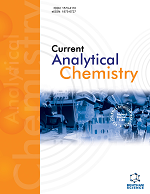
Full text loading...

Pedicularis kansuensis Maxim. is a commonly used Tibetan medicine that has been used for a long time to clear heat and detoxify, remove dampness and diuresis, treat sores, and nourish. It has favorable biological activities such as anti-inflammatory, antioxidant, and anti-fatigue. However, to date, only a handful of studies have utilized traditional separation and purification methods to investigate the chemical constituents of Pedicularis kansuensis Maxim. This scarcity of comprehensive and systematic research on its chemical composition impedes the further exploration of its biological activity and clinical applications.
It is imperative to develop an effective, dependable, and expeditious methodology for the systematic analysis and comprehensive characterization of the diverse chemical constituents found in Pedicularis kansuensis Maxim through cracking pathways and patterns.
This study used negative ion mode UHPLC-QTOF-MS/MS and 8 reference standards to comprehensively investigate the collision-induced dissociation tandem mass spectrometry (CID-MS/MS) fragmentation pathway of chemical components in Pedicularis kansuensis Maxim. A method based on ultra-high performance liquid chromatography and quadrupole time-of-flight mass spectrometry combined with data analysis software was established for screening and identifying targeted and non-targeted components of Pedicularis kansuensis Maxim.
A total of 150 compounds were identified in Pedicularis kansuensis Maxim, including 43 acylglucoside, 36 iridoid glycosides, 19 lignans, 41 flavonoids, and 11 other compounds.
This research has meticulously crafted an efficient and comprehensive methodology for the detection of intricate compounds. It has been successfully implemented in the analysis and identification of chemical constituents within Pedicularis kansuensis Maxim, thereby laying a solid foundation for further in-depth exploration of this species. Moreover, this work serves as a valuable reference for the study of other traditional Chinese medicinal herbs.